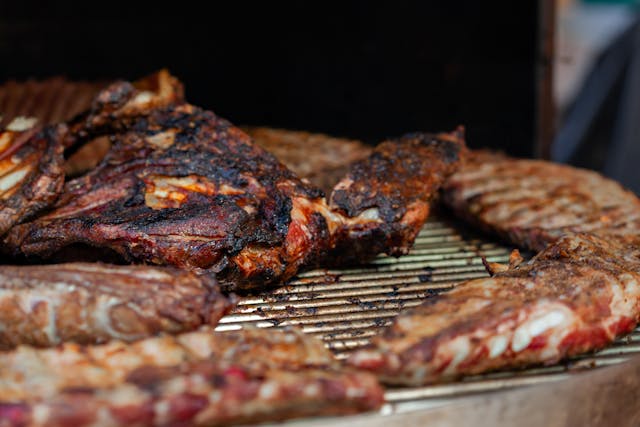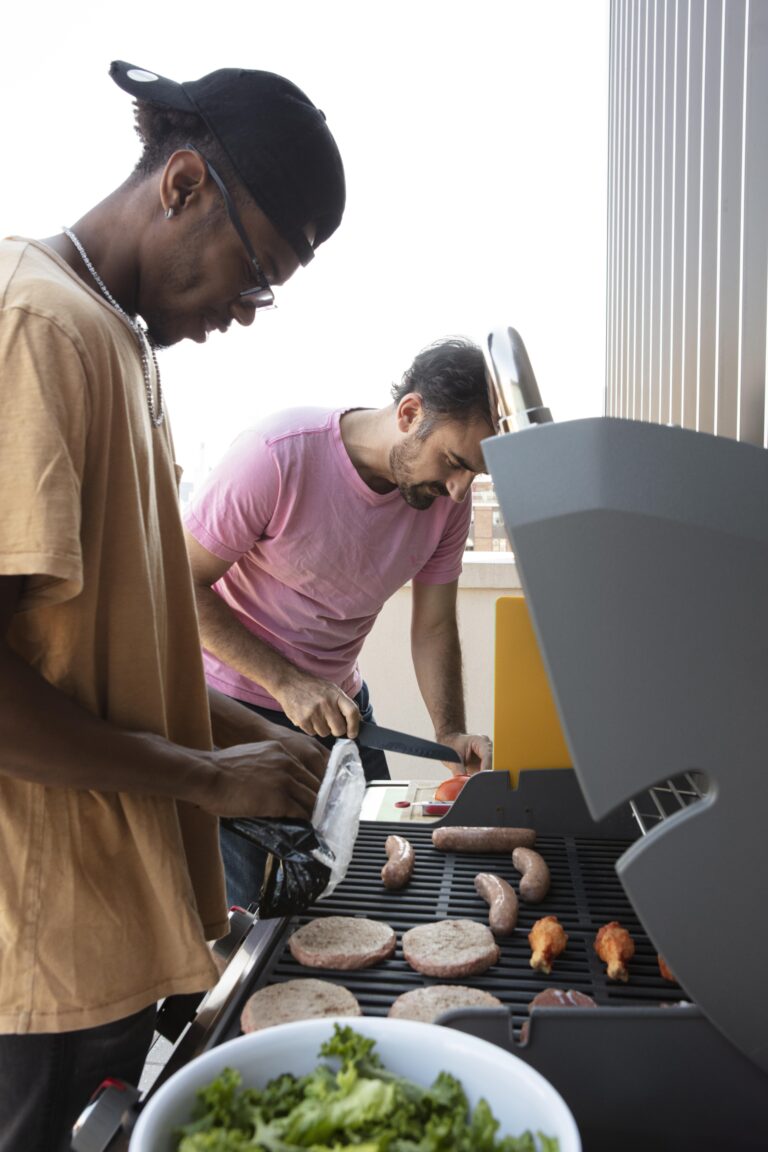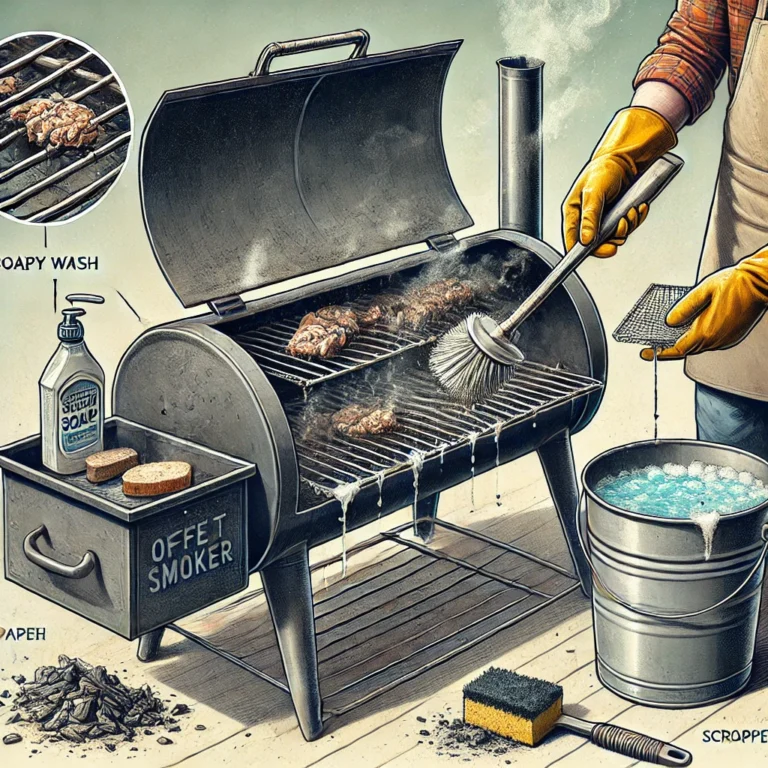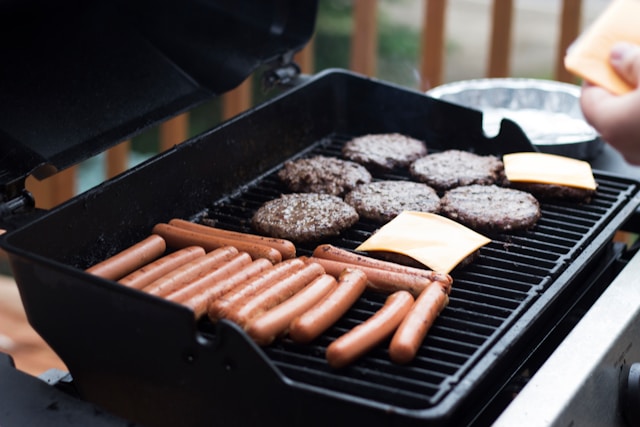Cooking Temperature: How to Set the Perfect Heat on Your Offset Smoker (2025
Offset smoker cooking temperature guide are a favorite topic among barbecue enthusiasts for their ability to create rich, smoky flavors through low-and-slow cooking. However, mastering the cooking temperature in an offset smoker can be a challenge, as it requires an understanding of heat management, airflow, and fuel control. Whether you’re cooking brisket, ribs, or poultry, knowing the ideal cooking temperature is crucial to achieving delicious, tender results.
In this comprehensive guide, we’ll explore how to maintain consistent temperatures, the best temperature ranges for different meats, and techniques for optimizing your smoker’s performance. Unlike gas grills or pellet smokers, offset smokers rely on natural airflow and wood or charcoal as fuel sources, making temperature control more hands-on.

1. Preheating Your Offset Smoker
Before you start cooking, it’s essential to properly preheat your offset smoker. Preheating ensures the cooking chamber reaches the desired temperature, stabilizing heat and smoke before you add your meat. Allow at least 30-45 minutes for preheating, and make sure your smoker’s metal body is evenly heated. Use a chimney starter for your charcoal to get the fire burning quickly and consistently.
2. Ideal Cooking Temperatures for Different Meats
Different meats require different temperature ranges to cook properly and retain moisture. For example, brisket, pork shoulder, and ribs are best cooked low and slow at temperatures between 225°F and 275°F, while poultry benefits from higher heat. 300°F to 325°F to ensure crispy skin while keeping the meat moist. 225°F to 250°F for tender, fall-off-the-bone texture
3. Managing Fire and Fuel for Consistent Heat
Managing your fire is the most important factor in controlling cooking temperature. Offset smokers use either wood, charcoal, or a combination of both as fuel. Using hardwoods like oak or hickory provides long-lasting heat and a rich smoky flavor. Add small amounts of fuel at a time to avoid sudden temperature spikes. Use lump charcoal for steady, consistent heat, and add wood chunks for flavor.
4. Using Water Pans to Regulate Temperature
Placing a water pan in your smoker helps stabilize the cooking temperature and adds moisture to the air, preventing your meat from drying out during long cooking sessions. This technique is especially helpful when smoking at lower temperatures. Place the pan between the firebox and cooking chamber to diffuse heat and create a moist cooking environment.
5. Monitoring Temperature with Thermometers
Accurate temperature monitoring is key to successful smoking. Invest in a quality dual-probe thermometer to measure both the temperature inside the cooking chamber and the internal temperature of your meat. Don’t rely solely on the built-in thermometer of your smoker, as it may not reflect the actual temperature at the grate level.
6. Adjusting Dampers for Airflow Control
Controlling airflow is critical for maintaining steady temperatures in an offset smoker. Use the intake damper to regulate how much oxygen reaches the fire, which controls the intensity of the heat. The exhaust damper should be kept open to ensure proper smoke flow and avoid bitter-tasting creosote buildup. Adjust the intake damper slightly to raise or lower the temperature as needed.
7. Dealing with Weather: Wind, Rain, and Cold
Weather conditions can have a significant impact on cooking temperatures in your offset smoker. Wind can fan your fire too much, while cold weather can drop your temperature. To combat this, place your smoker in a sheltered area and consider adding extra insulation during cold weather. Use a windbreak or smoker blanket to help maintain stable heat in challenging weather conditions.
Conclusion
Maintaining the right cooking temperature in an offset smoker is essential for achieving perfect barbecue results. Understanding the temperature ranges for different meats and managing fuel and airflow are key skills to develop. By carefully preheating your smoker, monitoring the internal temperature of the meat, and adjusting for weather conditions, you can control the cooking environment for optimal flavor and tenderness.
As with any smoker, patience and practice are required to master temperature control. Use water pans, reliable thermometers, and good-quality fuel to ensure that your smoker maintains a consistent heat level throughout the cooking process. Experimenting with different airflow settings and fuel combinations will help you find what works best for your specific smoker. Ultimately, offset smoking is a rewarding method of barbecue that allows for rich flavors and perfectly cooked meats. By following the techniques in this guide, you’ll be well on your way to becoming a pitmaster, serving up delicious, tender barbecue every time.







